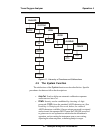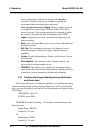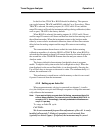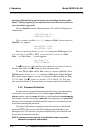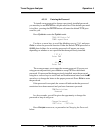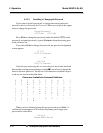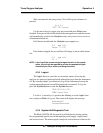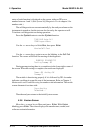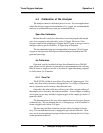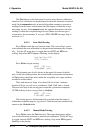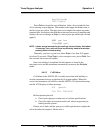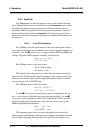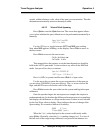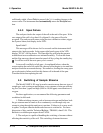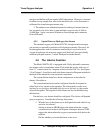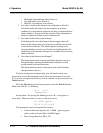
Trace Oxygen Analyzer Operation 4
4-11
Teledyne Analytical Instruments
4.4 Calibration of the Analyzer
The analyzer must be calibrated prior to its use. For most applications
where the desired range of measurement is 0 to 1 ppm, we recommend the
analyzer be calibrated using a span gas as detailed below:
Span Gas Calibration
Before the cell is ready for calibration, it must be purged with semple
gas to low oxygen levels preferably below 0.2 ppm. However, if the
oxygen contact of the sample gas is higher than 0.2 ppm, a zero gas such as
nitrogen with oxygen levels below 0.2 ppm may be required.
The recommended span gas concentration is between 7.0 to 9.0 ppm
oxygen in nitrogen, and will require calibration be performed in the 0-10
ppm analyzer range.
Air Calibration
If desired, a newly installed cell may be calibrated in air to 209,000
ppm. However, this practice is generally not recommended as the cell may
take 24 hours or longer to recover to less than 0.2 ppm after being exposed
to air for about 3 to 5 minutes.
4.4.1 Zero Cal
The B-2CXL cell has a zero offset of less than 0.2 ppm oxygen. Nor-
mally, the offset slowly decreases during the first 7 to 10 days of operation,
and is expected to reach a steady value after this time.
Generally, the value of the zero offset is part of the oxygen reading of
the sample gas as shown by the analyzer readout. As an example, a reading
of 0.5 ppm oxygen may include 0.4 ppm oxygen in the sample gas and a 0.1
ppm zero offset.
The determination of the zero offset requires the use of oxygen free gas
to the analyzer. We recommend the use of nitrogen gas with a scrubber to
assure oxygen levels below 0.02 ppm.
The user may decide to eliminate the zero offset for improved accu-
racy. If so desired the analyzer is equipped to provide this function. How-
ever, we do not recommend carying out the cal zero during the first 10 days
of the operation of the cell.



